
Fundamentals
The essence of understanding hair, particularly the rich, varied textures that grace the heads of Black and mixed-race communities, begins with an appreciation of its fundamental building blocks. At its core, hair is primarily composed of Proteins, fibrous structures known as Keratin. This remarkable protein, a true marvel of biological design, gives hair its strength, elasticity, and shape. It forms a complex, organized matrix, holding the individual strands in their unique patterns, from the tightest coils to flowing waves.
Protein denaturation refers to a process where these foundational Protein Structures lose their natural shape, disrupting their inherent function. Think of it as a delicate sculpture being altered; the material is still there, but its intended form, and consequently its purpose, becomes compromised. This alteration is not a chemical change in the bonds themselves, but rather a disruption of the intricate folding and hydrogen bonds that hold the protein in its specific three-dimensional configuration. The consequence of this structural shift can be seen in hair that loses its characteristic bounce, feels brittle to the touch, or even refuses to hold its natural curl pattern.
The vitality of our hair, its very resilience, is intrinsically linked to the preservation of its protein integrity. When keratin proteins maintain their optimal conformation, they provide the internal scaffolding that allows hair to withstand external forces, retain moisture, and exhibit its inherent beauty.
Protein denaturation marks a loss of a hair strand’s original structural form, impacting its strength and natural pattern.
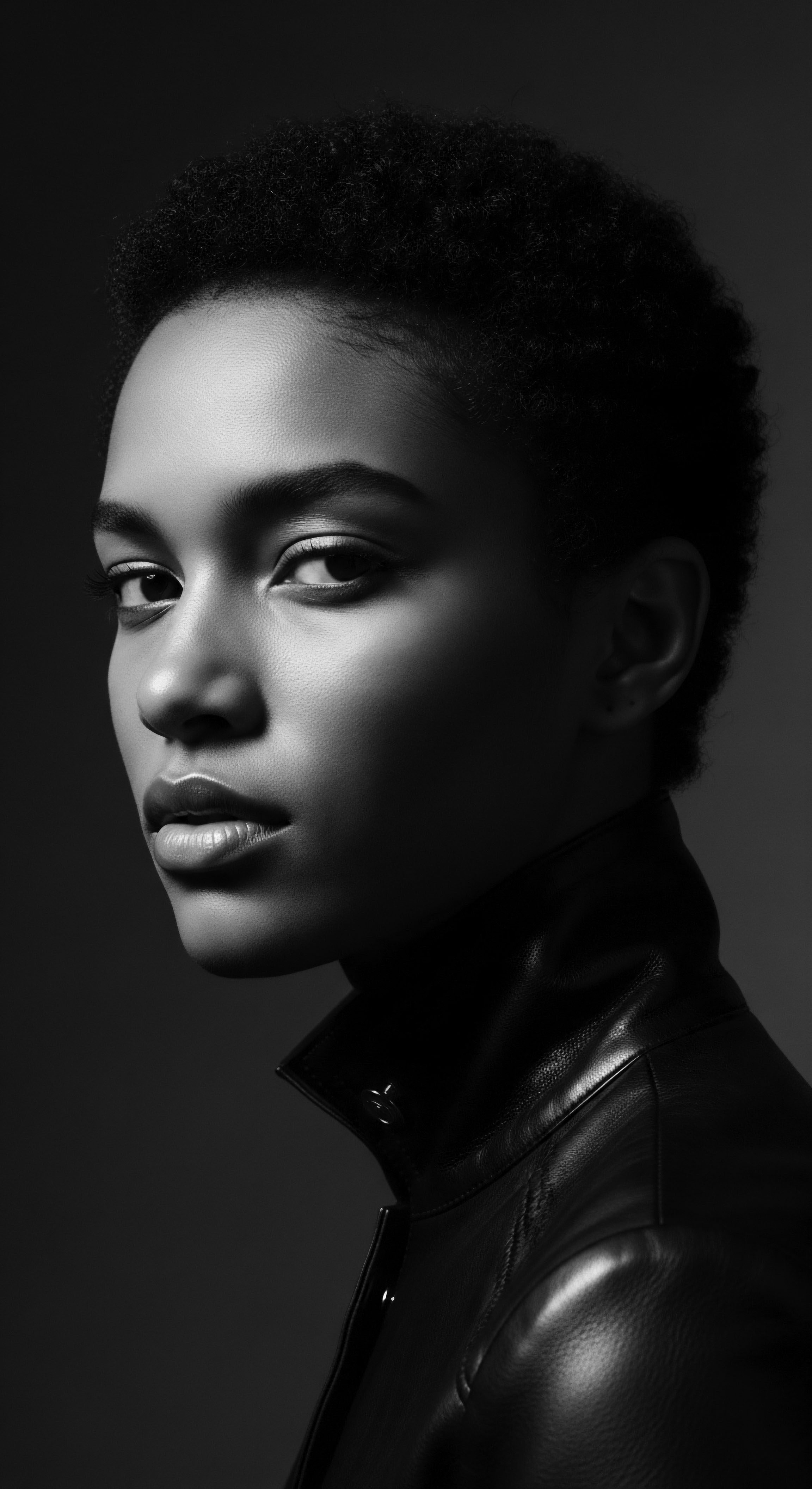
Understanding the Agents of Change
Several common agents can trigger this profound alteration in hair proteins. We see these agents in daily practices, often without a full awareness of their deep impact.
- Heat ❉ The application of high temperatures, from styling tools like flat irons and blow dryers, can cause significant denaturation. The energy imparted by heat disrupts the hydrogen bonds within the keratin structure, causing the protein to unfold and rearrange. For textured hair, which often possesses a more elliptical shape and higher density of disulfide bonds, making it more prone to heat-induced changes, this can be particularly concerning.
- Chemicals ❉ Certain chemical treatments introduce substances that directly interact with the protein structure. Relaxers, which aim to permanently straighten hair, utilize highly alkaline compounds such as sodium hydroxide or guanidine carbonate to break and rearrange the disulfide bonds, a more severe form of alteration than simple denaturation. Dyes and perms also involve chemical reactions that can compromise protein integrity, leading to protein loss.
- PH Extremes ❉ Hair thrives within a slightly acidic pH range, typically between 4.5 and 5.5. When exposed to highly acidic or alkaline substances, the electrical charges on the amino acids within the proteins are disturbed, causing them to repel or attract abnormally. This shift in charge leads to unfolding and loss of shape, contributing to damaged hair.
From ancient traditions of hair care to modern styling routines, the interplay between these external factors and the delicate inner world of hair proteins has shaped experiences, dictated practices, and, at times, led to unforeseen challenges. Reflecting on this elemental understanding allows us to approach hair care with greater reverence for its intricate biology and the wisdom of our ancestors who, through observation and practice, found ways to protect these precious strands.

Intermediate
Moving beyond the foundational understanding, the concept of protein denaturation assumes a deeper meaning within the context of textured hair heritage. Hair, in its many forms, especially coily and curly textures, possesses an inherent structural uniqueness. The elliptical shape of the hair shaft and the specific distribution of disulfide bonds contribute to the characteristic curl pattern.
This anatomical truth means textured hair often experiences challenges differently from straighter hair types, particularly regarding its susceptibility to external stressors. The journey of understanding protein denaturation for textured hair becomes a journey through shared histories and inherited practices.
The impact of denaturing agents on textured hair frequently manifests as a loss of curl definition, increased brittleness, a reduction in elasticity, and a straw-like feel. This isn’t just an aesthetic concern; it speaks to the very integrity of the hair fiber, compromising its ability to retain moisture and resist further breakage. The hair’s natural spring and resilience, cherished qualities in many hair traditions, diminish when proteins are compromised.
Hair’s unique structural attributes make it particularly susceptible to protein denaturation, impacting its natural texture and strength.
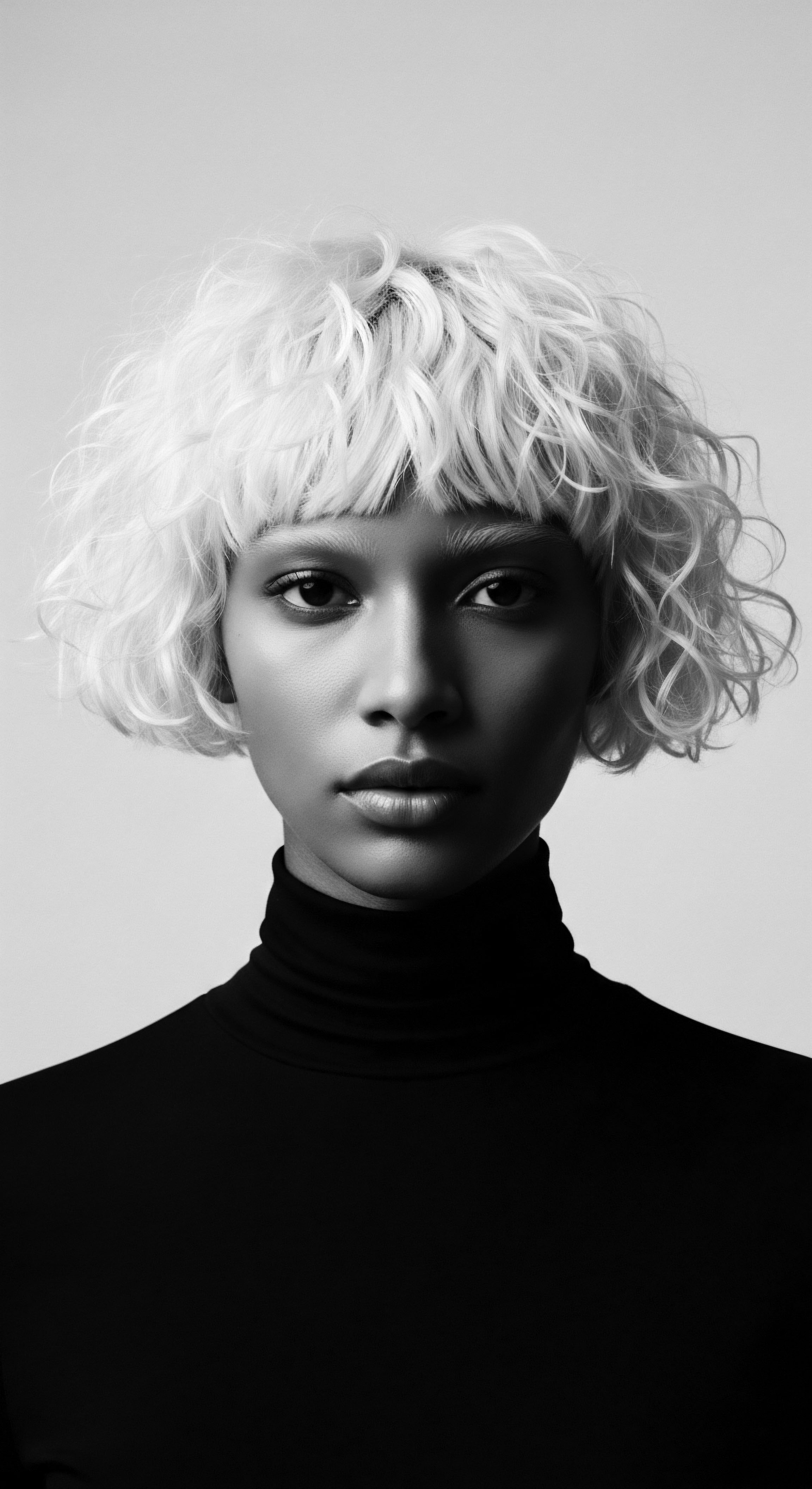
Denaturation in Practice ❉ The Historical Echoes of Styling
Throughout history, the practices of hair styling and alteration within Black and mixed-race communities have, at times, inadvertently interacted with the principles of protein denaturation. The desire for diverse expressions, sometimes influenced by societal pressures, led to the adoption of methods that, while achieving certain looks, could also impose stress upon the hair’s protein framework.
Consider the widespread historical practice of hair pressing, often involving the use of Hot Combs. This method, which emerged in the early 20th century, utilized heated metal combs combined with various greases and oils to temporarily straighten tightly coiled hair. The intense heat applied directly to the hair shaft, reaching temperatures that could exceed 200°C, directly impacted the keratin proteins.
While the temporary straightening effect was often desired for manageability or conformity, repeated exposure to such temperatures would induce denaturation, leading to dryness, reduced elasticity, and a susceptibility to breakage over time. The very act of heat pressing, a means of conforming to prevailing beauty standards, became a historical case study in the effects of sustained protein alteration on textured hair.
The story of the hot comb’s ascent highlights a particular relationship with protein denaturation. Hair, primarily keratin, relies on a delicate balance of bonds to maintain its shape. Heat, a primary denaturing agent, disrupts the hydrogen bonds that contribute to curl formation. While these bonds are relatively weak and can reform upon rehydration, consistent high heat application, especially without adequate protection, can lead to permanent changes in the hair’s internal structure.
The hair loses its ability to return to its original coiled state, a phenomenon often termed “heat damage.” This is a manifestation of permanent protein denaturation and alteration. The long-term implications for countless individuals who relied on pressing as a primary styling method were often weakened strands and a diminished natural hair pattern.
| Method Hot Combing/Pressing |
| Primary Denaturing Agent Thermal Energy (High Heat) |
| Historical Context/Impact on Hair Heritage Widely adopted in the 20th century to achieve straight styles; led to heat damage, reduced elasticity, and altered curl patterns in many Black hair textures. |
| Method Lye Relaxers |
| Primary Denaturing Agent Strong Alkali (Sodium Hydroxide) |
| Historical Context/Impact on Hair Heritage Introduced for permanent straightening; severely breaks disulfide bonds, leading to significant protein loss and weakening of hair fiber. |
| Method "No-Lye" Relaxers |
| Primary Denaturing Agent Milder Alkaline Chemicals (e.g. Calcium Hydroxide) |
| Historical Context/Impact on Hair Heritage Developed as a "gentler" alternative, yet still capable of protein alteration and damage, albeit sometimes less overtly harsh than lye formulas. |
| Method These methods, born from diverse socio-cultural pressures, underscore the historical interaction between human innovation, aesthetic desires, and the biological realities of hair protein integrity. |
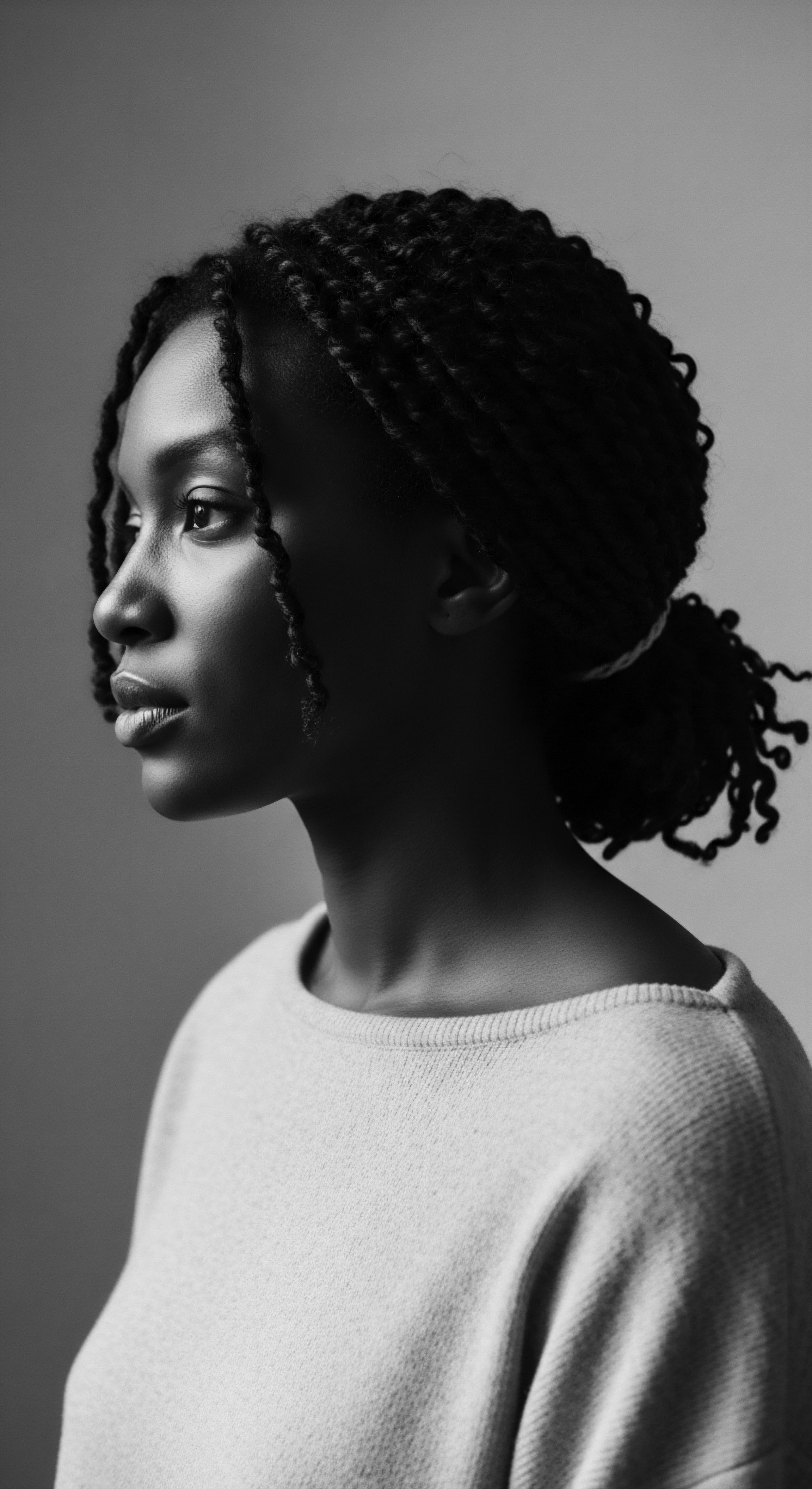
Ancestral Wisdom and Protection
Ancestral practices, often passed down through generations, reveal an intuitive understanding of hair’s fragility and the need for protective measures, even if the underlying science of protein denaturation was not explicitly articulated. Many traditional care rituals, though not framed in scientific terms, served to protect the hair’s protein structure.
Consider the ancient use of Plant Oils, such as coconut oil, shea butter, and various botanical infusions, for hair lubrication and sealing. These emollients, often applied as part of pre-washing rituals or daily dressing, created a physical barrier on the hair shaft. This barrier could reduce friction from manipulation, shield strands from environmental stressors, and, importantly, mitigate the direct impact of heat or alkaline substances from traditional cleansing agents.
While not preventing denaturation in its entirety, these practices contributed to overall hair health, limiting the extent of damage and preserving moisture, which is crucial for maintaining protein flexibility. Studies have shown that certain oils, like neem oil, can significantly reduce protein loss during cleansing and straightening, acting as protective agents.
The use of cooling clays and plant-based rinses also played a part in maintaining hair equilibrium. Many traditional formulations were pH-balancing, helping to restore the hair’s natural acidic mantle after cleansing or styling. This gentle approach, in contrast to harsh, highly alkaline cleansers, helped keep the cuticle layers smooth and sealed, protecting the inner protein cortex from exposure and potential denaturation. The ancestral knowledge, therefore, speaks to a holistic approach where the preservation of hair’s inherent vitality was paramount, often through gentle methods that inadvertently guarded against protein compromise.

Academic
The academic understanding of protein denaturation, when viewed through the lens of textured hair, moves beyond a simple definition to a profound exploration of complex molecular alterations, their historical implications, and ongoing challenges. Hair, predominantly composed of Keratin Proteins, exists in a sophisticated hierarchical structure, from alpha-helices and beta-sheets at the molecular level to macrofibrils and ultimately the visible hair fiber. The integrity of this elaborate architecture is directly linked to the stability of its proteins.
Denaturation, in this academic context, signifies a process where external stressors induce a conformational change in these keratin proteins, disrupting the intricate hydrogen and disulfide bonds that maintain the hair’s mechanical strength, elasticity, and natural morphology. This is not merely a surface alteration but a fundamental shift in the protein’s spatial arrangement, leading to an impaired ability to function optimally.
The molecular mechanisms underpinning protein denaturation in hair are multifaceted. When hair encounters excessive thermal energy, the hydrogen bonds, which are crucial for maintaining the alpha-helical structure of keratin, begin to rupture. This unraveling of the helical configuration compromises the protein’s inherent stability. In the presence of strong alkaline chemicals, characteristic of lye-based hair relaxers, the robust Disulfide Bonds (covalent linkages between cysteine residues that provide significant structural rigidity) are chemically broken and then reformed in new positions, leading to a permanent alteration of the hair’s shape.
While chemical straightening is a more aggressive modification than typical denaturation, the weakening of the protein matrix that ensues renders the hair more susceptible to subsequent physical denaturation and overall degradation. Acidic conditions can also induce protein denaturation by altering the ionic charges on the protein’s amino acid side chains, disrupting electrostatic interactions and hydrogen bonds, thus leading to protein unfolding and structural instability.
Protein denaturation in textured hair involves intricate molecular changes to keratin, weakening the hair’s structural integrity and altering its natural form.
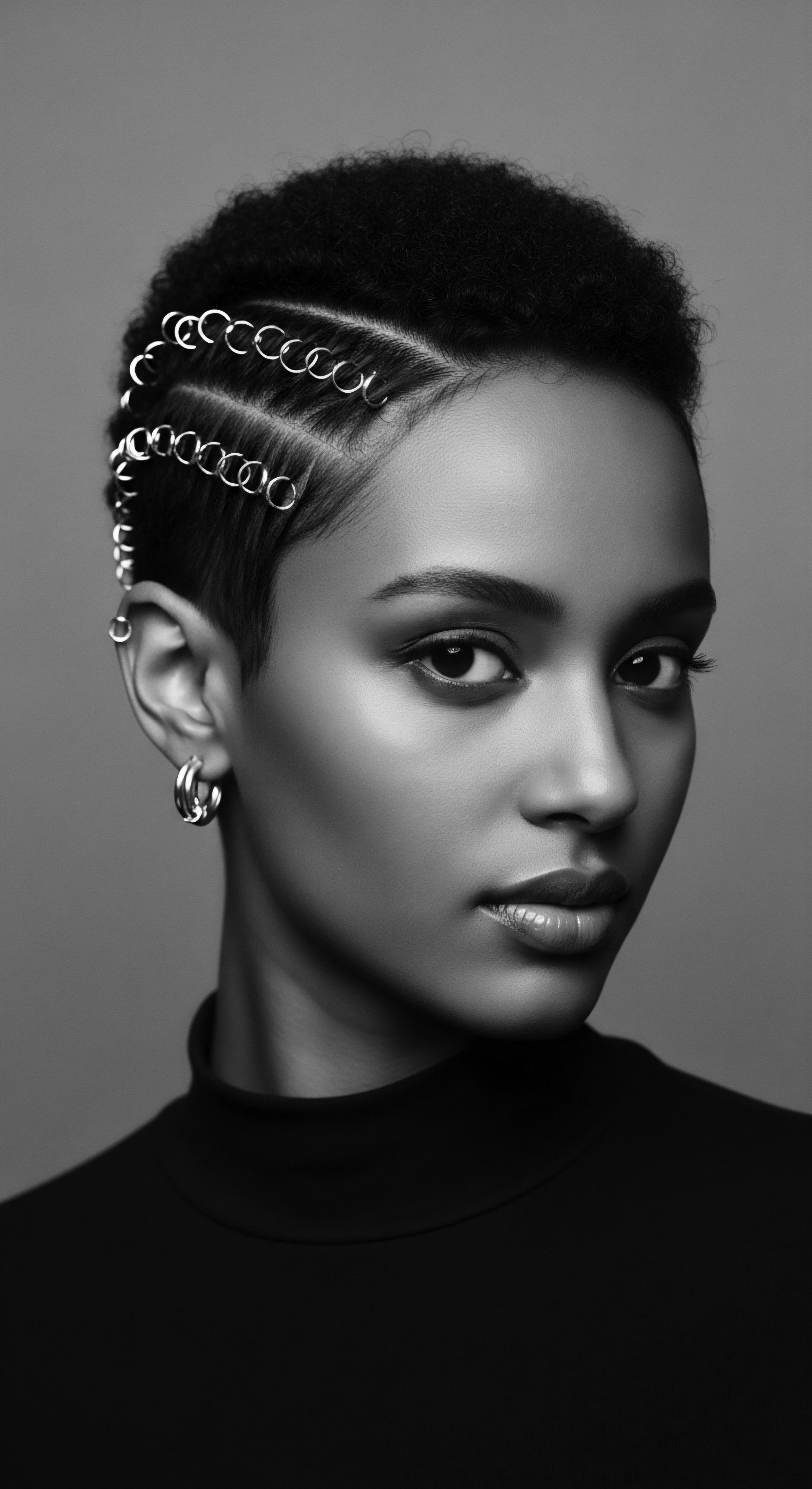
The Enduring Legacy of Chemical Modification ❉ A Case Study in Hair Relaxers
The application of chemical hair relaxers represents a particularly poignant and complex example of protein denaturation and chemical modification within the heritage of Black and mixed-race hair. Historically, these treatments arose from a confluence of factors ❉ the desire for manageability, the pursuit of diverse aesthetics, and, regrettably, societal pressures rooted in Eurocentric beauty standards that often equated straight hair with desirability. The widespread adoption of relaxers, particularly since the mid-20th century, involved a profound alteration of the hair’s protein structure.
Lye relaxers, utilizing highly potent alkaline agents like sodium hydroxide, effectively broke a significant percentage of the hair’s disulfide bonds. This irreversible process forced the hair’s coiled structure into a straightened configuration. The subsequent reformation of these bonds, often in a haphazard manner, created a chemically altered and inherently weaker hair fiber. The profound chemical trauma to the hair’s protein matrix made it susceptible to further damage, including breakage at the transition point between relaxed and new growth, frizzy textures, and a general loss of resilience.
A powerful illumination of this complex history can be found in a study by the National Institutes of Health, published in October 2022, which revealed a significant association between the frequent use of chemical hair straighteners and an increased risk of uterine cancer. This particular finding, which built upon over a decade of scientific research, brought to light a hidden health cost associated with a practice deeply embedded in the hair care heritage of Black women. The study indicated that women who used hair relaxers more than four times a year faced a higher risk of developing uterine cancer. This statistic compels a deeper reflection on the systemic pressures that encouraged the use of these chemically denaturing agents, even at the expense of long-term health.
The research not only quantifies a severe biological consequence but also prompts a critical re-evaluation of beauty ideals and product safety within diasporic communities. It spotlights a historical instance where a widespread cultural practice, driven by complex social dynamics, had profound and often unseen biological ramifications on the very proteins that constitute hair.
The subsequent introduction of “no-lye” relaxers, often containing calcium hydroxide or guanidine carbonate, aimed to mitigate some of the harshness of lye formulas. However, these formulations, while perhaps less caustic on the scalp, still relied on alkaline chemistry to disrupt protein bonds, leading to a reduction in cystine and continued protein compromise. The academic discourse clarifies that even these “milder” versions still induce significant protein alteration, leading to concerns about hair integrity and long-term health outcomes. The implications extend beyond immediate hair health, reaching into public health considerations and the ethical responsibilities of the beauty industry.

The Interconnectedness of Mechanical Stress and Protein Stability
Beyond chemical and thermal agents, sustained mechanical stress significantly contributes to protein denaturation and structural degradation in textured hair. The inherent coiling and twisting of afro-textured hair, while beautiful, create points of vulnerability where strands can knot, tangle, and experience increased friction. Common styling practices that involve tension, such as tight braiding, weaving, and excessive manipulation during detangling, can impose mechanical forces that stretch and ultimately disrupt the keratin protein structure. This mechanical denaturation can lead to micro-fissures in the cuticle, exposing the delicate inner cortex and accelerating protein loss.
Research highlights that the apparent fragility of African hair is often attributed to external physical trauma resulting from grooming, rather than an inherent weakness in its cystine-rich protein distribution. This perspective redirects the focus from inherent biological “fragility” to the impact of styling methods and the necessary evolution of care practices. Academic studies on hair from various ethnic groups confirm that while the basic biochemical composition of keratin is consistent across populations, the morphology of the hair follicle and shaft, particularly in textured hair, renders it more susceptible to mechanical and environmental stressors. This structural reality demands a nuanced approach to care, recognizing that even daily rituals can contribute to protein compromise if not performed with mindful gentleness.
The academic understanding of protein denaturation in textured hair thus compels a re-evaluation of past practices, a critical examination of contemporary products, and an informed vision for future care that honors biological realities while celebrating cultural expressions.
- Thermal Denaturation ❉ Elevated temperatures, often exceeding 200°C for tools like flat irons, disrupt the hydrogen bonds within keratin, leading to an irreversible unfolding of the protein’s alpha-helical structure. This renders the hair stiff, dry, and prone to fracture.
- Chemical Denaturation ❉ Strong alkaline agents, such as those found in lye-based relaxers, break the stable disulfide bonds between keratin molecules. The subsequent re-formation of these bonds in a straightened configuration fundamentally alters the protein’s tertiary structure, permanently modifying the hair’s natural coil.
- Mechanical Denaturation ❉ Excessive tension, pulling, or friction, often associated with tight styling or aggressive detangling of coiled hair, can cause physical stress that stretches and fractures the protein fibers, resulting in cuticle damage and protein loss.
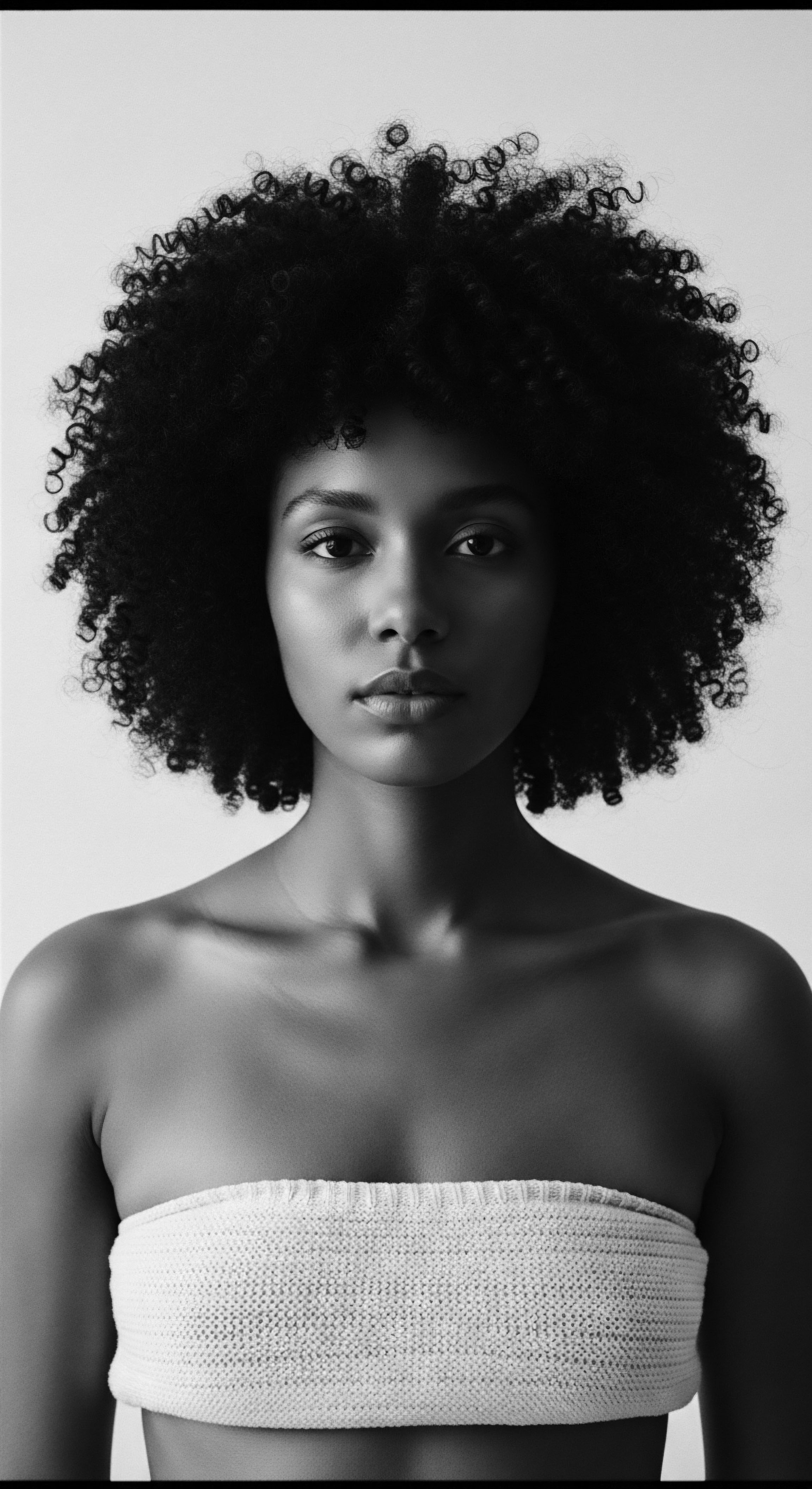
Modern Insights and Therapeutic Approaches
Contemporary hair science offers advanced insights into mitigating the effects of protein denaturation and restoring hair integrity. The development of protein treatments, for instance, aims to replenish lost protein and fortify weakened strands. These treatments typically employ hydrolyzed proteins – proteins broken down into smaller fragments – that can penetrate the hair cuticle and temporarily fill gaps in the damaged cortex. This process, while not reversing denaturation entirely, can significantly improve the hair’s tensile strength, elasticity, and overall appearance.
The application of Hydrolyzed Proteins serves as a temporary scaffolding, providing structural support to compromised areas of the hair shaft. However, a critical academic distinction exists ❉ overuse of protein treatments can itself lead to protein overload, where the hair becomes overly rigid, stiff, and brittle, ironically mirroring some effects of denaturation. This highlights the necessity of a balanced approach, emphasizing the interplay between protein and moisture to maintain optimal hair health. Hydrating ingredients like shea butter and honey, often found in deep conditioners, are crucial in restoring flexibility and preventing protein-induced stiffness.
| Era/Approach Early 20th Century ❉ Hot Combs |
| Mechanism of Action High heat applied directly to hair, disrupting hydrogen bonds. |
| Impact on Hair Protein Structure Temporary alteration of alpha-helical keratin structure; repeated use causes permanent heat damage and loss of elasticity. |
| Era/Approach Mid-20th Century ❉ Lye Relaxers |
| Mechanism of Action Strong alkaline chemicals (sodium hydroxide) breaking disulfide bonds. |
| Impact on Hair Protein Structure Irreversible chemical modification, significant protein loss, and weakening of hair fiber. |
| Era/Approach Late 20th/Early 21st Century ❉ "No-Lye" Relaxers |
| Mechanism of Action Milder alkaline chemicals (e.g. calcium hydroxide) breaking disulfide bonds. |
| Impact on Hair Protein Structure Less severe but still significant protein alteration and potential for cumulative damage. |
| Era/Approach Contemporary ❉ Silk Presses (Controlled Heat) |
| Mechanism of Action Controlled heat application with protective products, temporarily disrupting hydrogen bonds. |
| Impact on Hair Protein Structure Minimized heat damage if proper technique and heat protection are used, allowing curls to revert. |
| Era/Approach Protein Treatments/Deep Conditioners |
| Mechanism of Action Application of hydrolyzed proteins and emollients to fill gaps and restore moisture. |
| Impact on Hair Protein Structure Aids in temporary structural repair and moisture retention, enhancing resilience, but requires balance to avoid overload. |
| Era/Approach The progression reflects a growing awareness of hair's complex protein chemistry, moving from aggressive, permanent alterations to more nuanced, restorative approaches. |
Further innovations include the development of heat protectants, which form a barrier on the hair shaft to reduce the direct impact of thermal energy, often containing silicones or hydrolyzed proteins. These agents slow the rate of heat transfer, allowing for styling with less severe denaturation. Moreover, an academic lens encourages a more holistic view of hair health, recognizing that diet, hydration, and overall well-being also play an indirect yet significant role in maintaining protein vitality. The understanding of protein denaturation, therefore, serves as a cornerstone for developing truly effective and heritage-conscious hair care strategies.

Reflection on the Heritage of Protein Denaturation
The journey through the intricate world of protein denaturation reveals a narrative far richer than mere scientific processes; it speaks to the enduring spirit of textured hair, its keepers, and the profound legacy of care. From the elemental biology of keratin to the complex societal forces that shaped styling choices across generations, the story of protein integrity in Black and mixed-race hair is a testament to resilience, adaptation, and an unyielding connection to self. Our strands, woven with history and possibility, carry echoes of ancestral wisdom that intuitively guarded against compromise, even when the science was yet to be named.
The very concept of denaturation, a disruption of a protein’s natural form, finds its counterpoint in the persistent human endeavor to restore, protect, and celebrate hair in its authentic state. We acknowledge the historical pressures that led many to seek alterations, often through methods that, unbeknownst to them at the time, fundamentally altered the protein backbone of their hair. Yet, alongside these narratives of challenge, there flourished traditions of deep oiling, gentle braiding, and communal care that, in their own way, fostered an environment of protein preservation, allowing the hair to maintain its inherent strength and beauty.
Today, as we stand at a crossroads of advanced scientific understanding and a vibrant resurgence of natural hair appreciation, the reflection on protein denaturation calls us to a deeper purpose. It invites us to honor the past not with regret, but with informed compassion, recognizing the choices made under different historical circumstances. It prompts us to cultivate a future where hair care is not about conformity, but about knowledgeable nourishment, where every product choice and styling decision is an act of reverence for the strand’s unique heritage.
The “Soul of a Strand” truly resides in this continuous unfolding of understanding, connecting the molecular intricacies of keratin to the profound expressions of identity, community, and ancestral wisdom that define textured hair across the diaspora. The unbound helix of our hair continues its powerful journey, carrying stories of struggle, triumph, and the unwavering pursuit of authentic beauty.

References
- 1. Black Skin Directory. (2024, April 24). Hair Relaxers, Cancer Risks and Black Women’s Health.
- 2. BA Notes. (2023, November 16). The Diversity of Hair Characteristics Across Human Populations.
- 3. Martin & Jones. (2024, June 13). Hair Relaxers and Health ❉ Unveiling the Hidden Risks of Chemical Hair Straighteners.
- 4. Singamneni, S. S. & Madani, R. (2015). Chemical Hair Relaxers Have Adverse Effects a Myth or Reality. PubMed Central.
- 5. Bridgewater, S. (2011, February 14). The oppressive roots of hair relaxer. The Commonwealth Times.
- 6. La Pocion. La Pocion Ancestral Hair Mask – 11.8 Fl Oz (350ml). Amazon.com.
- 7. Pocion. Ancestral Hair Mask, Vitamins and Fortifying Formula for Hair Repair and Strengthening.
- 8. Morgan, K. (2024, April 10). As Many Black Women in U.S. Abandon Hair Relaxers Linked to Cancer, Sales Climb in African Countries. Capital B News.
- 9. La Pocion. La Pocion Ancestral Hair Mask – 11.8 Fl Oz (350ml) | Nigeria | Ubuy.
- 10. Adoukè, D. (2022, June 21). All you need to know about afro hair.
- 11. Simple Life Mom. Oil Protection and Healing for Heat Damaged Hair.
- 12. Jacobs-Huey, L. (1999). It’s Not Just Hair ❉ Historical and Cultural Considerations for an Emerging Technology. Chicago-Kent Law Review, 75(1).
- 13. Adhikari, K. & Pant, R. (2024, July 29). Hair protein damage control using essential oils ❉ Chemical analysis. ResearchGate.
- 14. Bruney, L. Should I get a silk press or will it damage my hair?
- 15. Lorona, S. (2023, December 23). Understanding Hair Damage and the Importance of Protein Treatments. Lemon8.
- 16. Adoukè, D. (2022, June 21). Afro Hair Care – The Ultimate Guide for 2022.
- 17. Quora. (2019, May 11). Should curly-haired people straighten their hair or does it damage the hair too much?
- 18. Perry, W. M. Nwadei, T. & Krueger, L. D. (2021). Getting to the Root ❉ A Historical Review of Hair in US White-Black Race Relations and the Importance for Dermatologists.
- 19. Daniels, G. et al. (2025, February). “I am now being who I am and I’m proud of it” ❉ Hair related personal and social identity and subjective wellbeing of older Black women in the UK. J WOMEN AGING.
- 20. Healthline. (2021, March 1). Too Much Protein in Hair ❉ Causes, Effects, and More.
- 21. Madame La Présidente. (2022, January 20). When and why should you do a protein treatment?
- 22. Mirmirani, P. & Khumalo, N. P. (2014). Hair at the intersection of dermatology and anthropology ❉ A review. Journal of the American Academy of Dermatology, 71(4), 819-826.
- 23. Parker, J. (2018, June 2). Hair Everywhere ❉ Anthropological Notes on the Long and Short of It. Open Anthropology.
- 24. CurlyTreats. How to protect curly hair from heat damage.
- 25. Mitchell, R. C. et al. (2015, May 12). Contemporary African-American Hair Care Practices. Journal of Clinical and Aesthetic Dermatology, 8(5), 10–16.
- 26. American Academy of Dermatology. 10 hair care habits that can damage your hair.
- 27. Kandi, V. et al. (2023). The Genomic Variation in Textured Hair ❉ Implications in Developing a Holistic Hair Care Routine. MDPI.
- 28. Ogden-O’Fee, V. (2024, February 1). The positives and negatives of protein-based hair care products and your hair. V for Hair & Beauty / Vj Barbers.
- 29. Pattern Beauty. (2024, October 27). Is Your Natural Texture Experiencing Protein Overload?
- 30. Curlsmith. (2023, June 27). How Hair Straighteners Damage Your Hair (and How To Fix It!).
- 31. Pattern Beauty. (2024, October 27). Is Your Natural Hair Getting Too Much Protein? How to Spot & Manage Overload.
- 32. Reddit. (2018, September 9). How can I straighten my hair without damaging it? ❉ r/HaircareScience.
- 33. Olumide, Y. M. (2004). Apparent fragility of African hair is unrelated to the cystine-rich protein distribution ❉ A cytochemical electron microscopic study. ResearchGate.
- 34. Myavana. The Science Behind Healthy Black Hair ❉ Importance of Quality Ingredients.
- 35. Wortmann, F. J. & Popescu, C. (2008). Effects of reduction on the denaturation kinetics of human hair. Biopolymers, 89(7), 600–605.
- 36. Gazineu, D. et al. (2023, May 18). Black women’s hair ❉ the main scalp dermatoses and aesthetic practices in women of African ethnicity. PubMed Central.
- 37. Dadzie, O. E. & Lawton, C. A. (2019, November 18). Microscopic Characteristics Of Scalp Hair Subjected To Cultural Styling. Dove Medical Press.
- 38. TIPS & TOES. Potential Side Effects of Protein Hair Treatments.
- 39. Ghadially, R. et al. (2023, May 18). Mechanisms of impairment in hair and scalp induced by hair dyeing and perming and potential interventions. PubMed Central.
- 40. DaSilva, R. C. et al. (2016). Relaxing/straightening of Afro-ethnic hair ❉ Historical overview. ResearchGate.
- 41. Silkbiotic. THE HAIR ❉ Structure and Ethnic Specificities.
- 42. Madame La Présidente. (2024, May 17). Proteins for hair.
- 43. Sanches, S. et al. (2021, March 30). Straight to the Point ❉ What Do We Know So Far on Hair Straightening? PubMed Central.
- 44. Speakman, J. B. (1938). Changing the shape of hair with keratin peptides. RSC Publishing.
- 45. Dias, M. F. & Reiss, F. N. (2023, September 3). Insights on the Hair Keratin Structure Under Different Drying Conditions. Polymers, 15(17), 3506.
- 46. Reis, E. et al. (2015). Keratins and lipids in ethnic hair. CORE.
